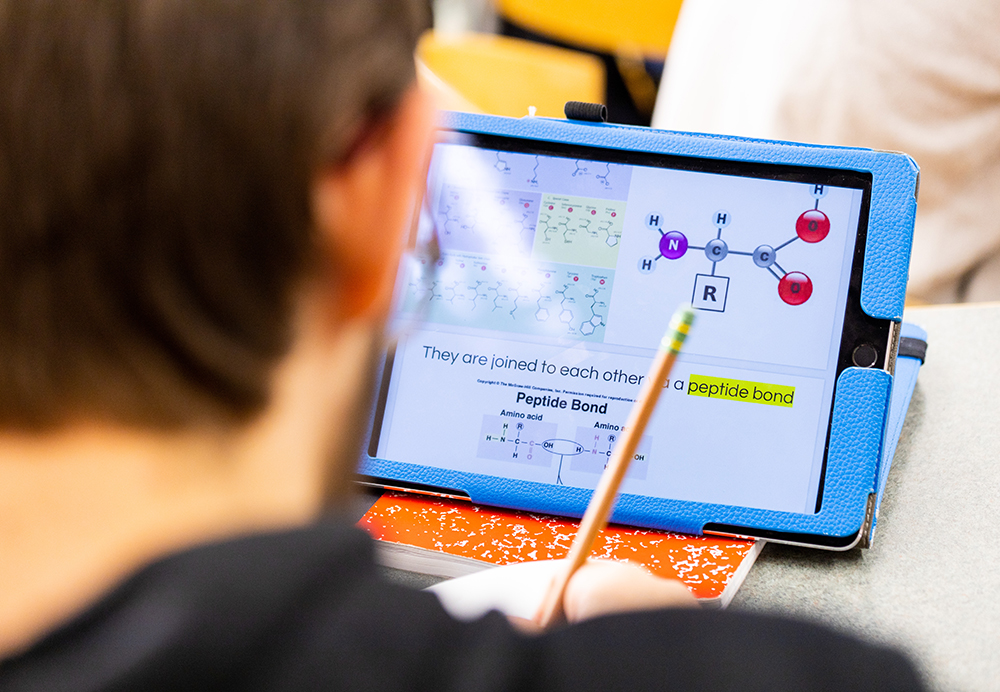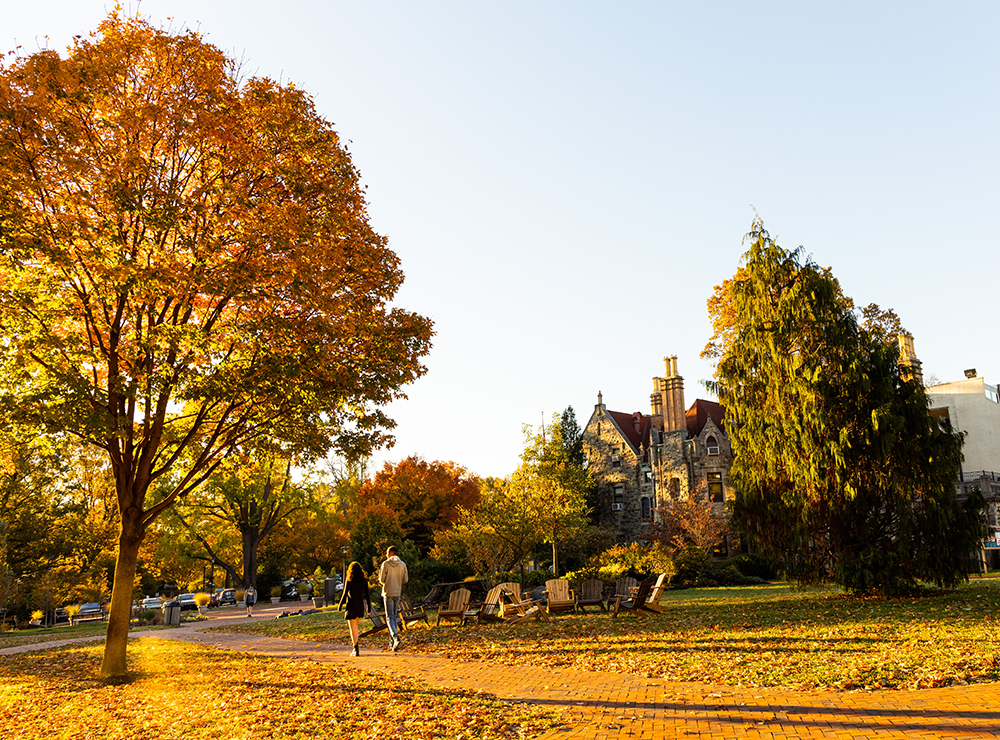When Does It Make Sense to Switch Schools in the Era of Distance and Social Distance Learning?
Margaret Metz, Friends’ Central School’s Director of Enrollment Management, shares her insights for an ever-changing educational landscape.

Education is an ongoing process, and it makes sense for parents to aim for the best possible schooling for each child, one that meets that child’s individual needs and ensures that they are healthy and happy while learning. These factors often lead families to wonder whether or not to think about a new school for their child. Is the current school providing the experience they are looking for? Would another school be a stronger option?
Typically, the decision to switch schools is guided by questions around when it’s the right time to make a change or which reasons might justify the switch. Today, however, many parents are rightfully approaching the subject of changing schools from the perspective of distance learning – whether or not their schools are doing it well and if they have the ability to adapt as needed to an ever-changing educational landscape.
Below, we take a look at the impact COVID-19 has had on education and highlight key moments when it may make sense for a parent to consider enrolling their child in a new school – one which may be better suited to providing a valuable remote learning experience.
The Changing Reality of Education in the Time of COVID-19
The emergence of the coronavirus pandemic in March of 2020 led to a rapid transition away from traditional classroom settings and towards remote learning, driven by the need to embrace social distancing in order to flatten the curve of infection.
 Though some schools, like Friends’ Central, moved fast to create a thorough and effective plan for remote learning, many schools did not have the resources or expertise to work as quickly. In many cases, this resulted in lost time as entire school districts announced the transition but took significant time to actually deliver remote education.
Though some schools, like Friends’ Central, moved fast to create a thorough and effective plan for remote learning, many schools did not have the resources or expertise to work as quickly. In many cases, this resulted in lost time as entire school districts announced the transition but took significant time to actually deliver remote education.
A lack of communication, a lack of foresight, and dissatisfaction with the process as a whole has led some parents who were previously happy with their children’s schools to wonder if it might be time to make a switch. Others, having now lived through months of remote learning with their children, have grown dissatisfied with the curriculum and similarly wonder if transferring to a different school will ensure that their child’s social and educational needs are being met.
There’s no single right answer for every parent. Some schools that struggled with distance learning initially may well emerge in the fall in a much better position to shift online should the need arise. Others may struggle into the winter months or beyond. One thing that is clear, though, is that there are certain signs parents should keep an eye out for, which may indicate that it’s time to make a switch.
Three Signs It Might Be Time to Switch Schools
- Your child feels disconnected from the learning experience.
If your child used to love going to school, participating in classes, and learning about virtually everything under the sun, but began to display indifference or even a dislike for school during remote learning, it’s important that you take notice.
It’s natural for students to feel stressed about the situation they’re in – this is a stressful time! – big changes in their attitude or disposition towards education can be indicative that they are not reacting well to the remote learning initiatives offered by their school.
This disconnect can stem from a variety of causes, including the changed classroom format inherent in most remote learning environments, a lack of personal connection, and perhaps a reduced variety and excitement in the assignments that they’re given. Whatever the case, it’s critical that parents take steps to preserve the inherent love of learning that all children possess.
- Your child feels disconnected from the school community.
A big part of what makes social distancing so difficult on all of us is how it can make us feel isolated – especially children, who are so used to seeing their friends on a daily basis simply by going to school.
When it’s done well, remote learning is capable of preserving these important relationships, providing students facetime with each other through synchronous learning and extracurricular activities. But when it is implemented poorly, student friendships and relationships can suffer, leading to reduced academic performance, isolation, and a less happy and fulfilling social life.
At Friends’ Central, we pride ourselves on the fact that we have taken special care to ensure our students still feel like they are a part of a community, even when they’re not in our classrooms. Clubs, team sports, and other extracurricular activities still meet virtually so that students can still benefit from these important relationships. Students also experience a blend of synchronous and asynchronous learning to better meet their social and emotional needs, as well as their academic needs. Mitigation and safety protocols and a great deal of planning by our committed administration working tirelessly with medical experts have allowed us to move to a largely in-person learning experience, toggling to virtual when necessary. Some parents have chosen to have their children learn 100% remotely, and we support them in that choice.
- Your child isn’t progressing.
Finally, if you feel that your child’s experience with distance learning isn’t helping them progress, grow, and develop academically, it may be time to consider making a change.
Remote education that relies too much on busywork, doesn’t connect kids directly with other kids, or removes all of the unexpected and exciting parts of learning and discovery, can result in your child being unchallenged, unmotivated, and bored, hurting their progress as well as their longterm relationship and outlook on education.
What to Look for In a Distance Learning Initiative
The distance learning experience that makes sense for your child and your family may well look different from the distance learning experience that makes sense for another family. We are all unique, after all, and carry different priorities; there is no right answer for all of us.
That being said, if you can find a school that helps keep your child engaged academically and socially, and which challenges your child to grow and progress whether they are learning from inside the classroom or from home, then you’ve done an excellent job as a parent.

Discover Friends’ Central School at our All-School Virtual Spring Open House on Tuesday, April 20 at 9:30 am. Monthly Admissions information sessions and personal tours available. More details at friendscentral.org/admission-events. We Go Further.
Friends’ Central School supports the Main Line Parent Community.



NO COMMENTS